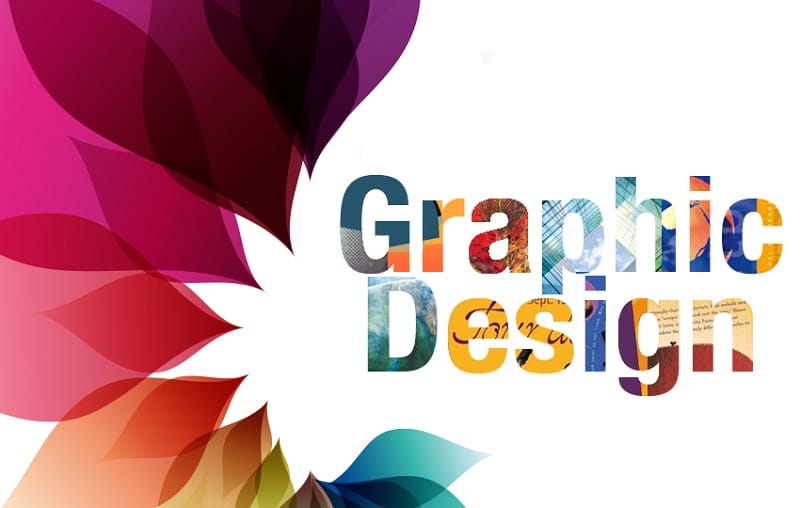Graphic designers are visual communicators who design and develop print and electronic media, such as magazines, television graphics, logos and websites. They may be employed by advertising agencies, design companies, publishers and other businesses that need design professionals. Most graphic designers earn bachelor’s degrees. These programs allow them to develop design and technical skills, and develop portfolios that can help them obtain employment after graduation.
Although there are no hard and fast education requirements, there are some general steps most individuals follow to become a graphic designer:
- Earn an associate’s or a bachelor’s degree OR go down the self-taught path via online instruction;
- Acquire the required software;
- Build your portfolio.
Graphic design is, of course, a technology-based field, one that is centered on doing and creating. It is more lab-oriented and less lecture-driven. However, there are different paths you can take to learn graphic design.
If you are a self-starter, are familiar with online learning, have pretty savvy computer skills and want to explore the graphic design field as a whole before selecting a more narrow focus, you should do fine with self-taught graphic design training, like Lynda or NetTuts.
However, if you are new to online learning, learn better with step-by-step guidance and advice or have specific career goals requiring a more advanced level of expertise, you may want to seek out a more structured, instructor-led program like an online graphic design degree.
Graphic Designer Education and Training
Earning a certificate or associate’s degree in graphic design may qualify graduates for assistant or technical support positions in the field. However, most graphic design positions require at least a bachelor’s degree. Students may benefit from attending one of the more than 300 schools approved by the National Association of Schools and Art Design. As part of their graphic design prerequisites, some programs only admit applicants who have completed at least one year of art and design courses. Admission may also entail submission of sketches and other artwork. Plenty of graphic design schools in Georgia, for example, require a design portfolio as part of their admission process.
According to a joint statement by AIGA and the National Association of Schools of Art and Design (NASAD), graphic design students should “make informed decisions about the match between their own educational goals and what programs deliver in actual preparation for performance in the field.”
However, the joint statement warns that “the presence of graphic design content in college courses or curricula, or even its designation as an area of emphasis or concentration, does not automatically indicate that the degree program adequately prepares students for professional practice.”
Graphic Design Certification & Licensure
No license or certification is required to become a graphic designer. However, a grassroots effort was launched in 2010 that proposed the formation of the Design Certification Counsel of America (DCCA) to administer certification when professionals became increasingly concerned with less-qualified individuals undercutting their rates for work in the graphic design arena.
According to the web site, the other core design fields, including industrial design, interior design, architecture and engineering do require proof that an individual is ready to practice professionally.
The grassroots effort feels that certification should be based on a combination of work experience, professional competency, business practice and education.
Although no professional certification is currently required or available for graphic designers, Adobe does offer training and certification validating your expertise in several design-specific software programs.
How Many Years of College Does It Take to Be a Graphic Designer?
Some colleges and universities offer Bachelor of Fine Arts programs with opportunities to focus on graphic design. These 4-year degree programs equip students with the technical and artistic skills necessary for entry-level employment or even higher positions in graphic design. Curricula are comprised mostly of design coursework, as well as a liberal arts core. Courses may include topics in commercial art, computer-assisted design, printing and studio art. Students may also take classes in book design and typography and participate in internships.
Graphic Design Career Skills
Along with a formal education, graphic designers should be artistic and creative and have strong verbal, visual and written communication skills. Designers often work independently and must meet strict deadlines, so the ability to manage time and stay on schedule is important. Business, marketing, and sales skills are also beneficial for this career, especially for graphic designers who are self-employed.
Employment Projections
According to the U.S. Bureau of Labor Statistics (BLS), employment of graphic designers was expected to increase 4% from 2016-2026. As of 2018, graphic designers earned a median salary of $50,370, also according to the BLS. Graphic designers with expertise in computer systems design can look forward to more employment opportunities, whereas designers working in print publishing will see a decrease in jobs.
Lesson Summary
Graphic designers design and develop print and electronic media, such as magazines, television graphics, logos and websites for advertising firms, design companies, and publishers. As of 2018, they earned a median salary of $50,370, according to the BLS. Graphic design requirements typically include a minimum of a bachelor’s degree, such as a BFA in Graphic Design is usually required to enter the field.

